The Seeker: Scout Hakan Andersson a hero of the Red Wings’ playoff streak

This story originally appeared in the March 16, 2015, edition of Sports Illustrated. To subscribe, click here.
At four o’clock on the Friday before the winter solstice, in the gathering gloom of the 58th parallel, Frölundaborgs Isstadion, an arena that holds 7,527 in a Swedish suburb of Göteborg, is filled with little more than 55 spectators and the unmistakable musk of moldering hockey equipment bags. Fifty-four of those people are hockey civilians, awaiting the start of a Junior B tournament game between Västerås and a team from Norway. The 55th is Håkan Andersson, the chief European scout of the Red Wings, who settles into a deserted section between the red line and one of the blue lines. At hand are the three things he finds indispensable in his line of work: a roster, a pen and a paper cup of steeping Earl Grey tea.
Five days earlier, on Sunday, Andersson had flown from his home in Stockholm to Venice. The following morning he had driven 75 miles northwest to Asiago, in the foothills of the Italian Alps, for the second-tier under-20 world championship, where he and 20 or so other NHL scouts saw three games contested by teams from lesser European hockey nations (Norway vs. Austria, Latvia vs. Slovenia and Belarus vs. Italy). Andersson returned home on Tuesday, took Wednesday and Thursday off, and now had driven five hours across the country to catch a modest four-team tournament. Andersson has been in the epiphany business for nearly 25 years; his roads to Damascus are the autoroutes and tarmacs of Europe. From October through early April every year, he typically will drive 20,000 miles in Sweden and take 65 flights in Europe, hopscotching the Continent. He attends some 200 games each season, distilling about 12,000 minutes of earnest if inelegant hockey to the handful of meaningful seconds in which an ineluctable truth about a player emerges, when a teenage boy reveals himself and, perhaps, foretells his future as a man.
Which NHL teams are best at finding late round draft gems
There is an exacting toll to the scouting life—cold rinks, rank air, time away from family (Andersson and his wife, Veronica Pihl, have a nine-year-old son, Philip)—but if you have instincts and contacts and luck and a stable organization with a sustainable hockey philosophy, the payoff can be considerable. Andersson is solely responsible for finding Pavel Datsyuk, Johan Franzén, Niklas Kronwall, Gustav Nyquist and Jonathan Ericsson, and had the lead role in identifying Henrik Zetterberg, the players who form the core of the current team that has extended Detroit’s playoff streak to 23 seasons. (The Red Wings, currently third in the Atlantic Division, are likely to reach their 24th consecutive postseason this spring.) Simply, Andersson does his job as well as anyone in sports. “Håkan is an unsung hero, an MVP for us,” general manager Ken Holland says. “His fingerprints are on a big part of our team.”
In the second game at the Göteborg tournament—host Frölunda plays Linköping—Andersson will focus on Jacob Larsson, a silky 17-year-old defenseman for the local team. Andersson, who serves on the Frölunda board of directors, knows Larsson well. So does the industry; last month, he was fifth among non–North American skaters in the predraft rankings of NHL Central Scouting. Andersson has scored big with a first-rounder before. In 2000 he helped convince Detroit to take the then undersized Kronwall (the defenseman has filled out to 6 feet and 194 pounds) with the 29th pick. But Andersson has made his reputation mucking in the murky corners, seeing something that other scouts don’t—or can’t. With the final pick of the ’02 draft he found Ericsson, a converted forward who plays on the Red Wings’ top defense pair with Kronwall. At one point Detroit was icing an all-Håkan line of Datsyuk (171st in 1998) at center and Zetterberg (210th in ’99) and the now retired Tomas Holmström (257th in ’94) on the wings.
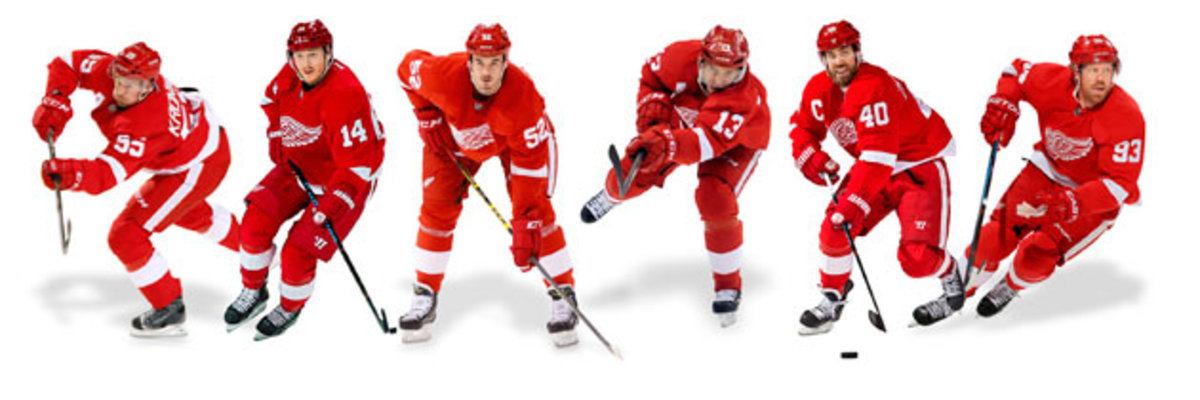
The NHL is dotted with late-round gems, including Rangers goalie Henrik Lundqvist (picked in the seventh round in 2000), a Frölunda product who never played particularly well when Andersson saw him. If the scout has a stain on his résumé, it is his failure to uncover a No. 1 goaltender, but in recent years he has made a point of speaking with more goalie coaches to sharpen his knowledge of the position. Andersson remains relentlessly curious. In Göteborg he is less focused on Larsson than on a righthanded shooting winger from Västerås, Lukas Zetterberg (no relation to Henrik). Andersson has already seen the 17-year-old Zetterberg three times and is uncertain what to think.
“Remember, this is a Junior B game,” Andersson says during the second period. “When the game’s over, am I going to remember that [Zetterberg] stood out? He should dominate. He tries to finish his checks, but he’s not really intense. His skills are O.K. Can he do what he does here in the NHL?” Zetterberg chases the play into the corner, on the side of the ice where Andersson is seated. His view is obscured, but the scout clearly sees what comes next: An opposing defenseman whips the puck to a teammate in the neutral zone. “I don’t know what happened, but it can’t be good,” he says. “If you asked me right now, I would say to you it’s doubtful he would be on [my] list.”
Watch: Red Wings prospect scores in spectacular fashion in AHL game
Like many Swedes, Andersson speaks nearly flawless, colloquial English—right down to his appropriation of one of Holland’s verbal ticks, beginning answers with “I would say to you....” Andersson is 50. He is a professional optimist, one of the prerequisites for a job in which his work and that of his 12 fellow Red Wings amateur scouts is refined annually into seven draft choices. If Andersson likes a player, he might say, “I don’t mind him,” to dampen his natural enthusiasm. If he really likes a player, Andersson will bypass standard operating procedure—after games he usually refashions the sparse notes he jots on his roster into a detailed report that he enters into the team’s scouting database—and rank him on his list of European prospects, which will have 30 to 40 names at the draft in Florida next June.
“The odds say 1.5 in seven make it [to the NHL],” he says. “The criticism is I go too much for the home run. Late rounds, I’ll go for pure talent. If a guy makes it, [he’ll probably] be on the top two lines. My joke is Kenny can pick up the phone [any time] and find a fourth-line player or a seventh [defenseman]. So why not swing for the fences?”
In July 1989, Detroit scouting director Neil Smith left the Red Wings to become GM of the Rangers. When he departed for New York, Smith brought along Christer Rockström, the European scout who a month earlier had been behind Detroit’s selection of defenseman Nicklas Lidström in the third round of the team’s epic draft. Red Wings assistant GM Nick Polano asked Rockström if he could recommend a replacement.
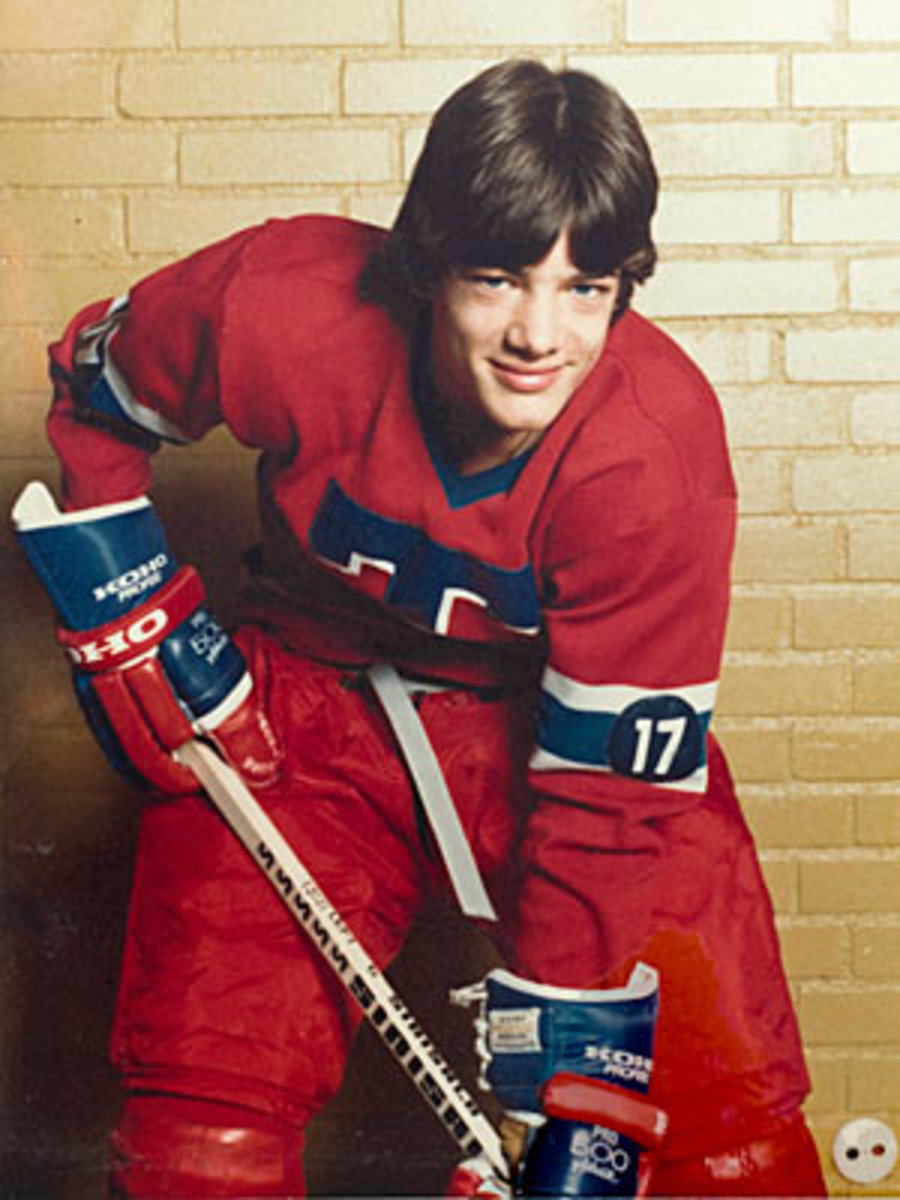
Rockström said he had someone in mind.
“[Håkan] had hunger,” says Rockström, 57, who spent 21 years with the Rangers and now works for the Canadiens. “He would be willing to go the extra mile for a team. And I knew he had a good eye. He’d been a pretty good youth player. He knew about puckhandling, skating, edges. He could look at a skater and tell you if a guy was stiff-kneed or knock-kneed.”
Polano flew to Stockholm, where Rockström introduced him to Andersson, a center whose playing career had been cut short before his 18th birthday because of a torn meniscus in his left knee. Polano told Andersson of the job opening in Detroit and then left for a scouting trip to Finland and Russia. When he returned, Polano took Andersson on a traveling job interview around the Swedish Elite League. “I’m telling him what to look for: skating, playmaking ability, hard work, someone who’s not intimidated,” says Polano, now a pro scout for the Senators. “I’d quiz him about this guy or that guy we were watching. And he was bang on. The guy was a natural. After a few days I’m thinking, I’m going to hire a fishing guide.”
[pagebreak]
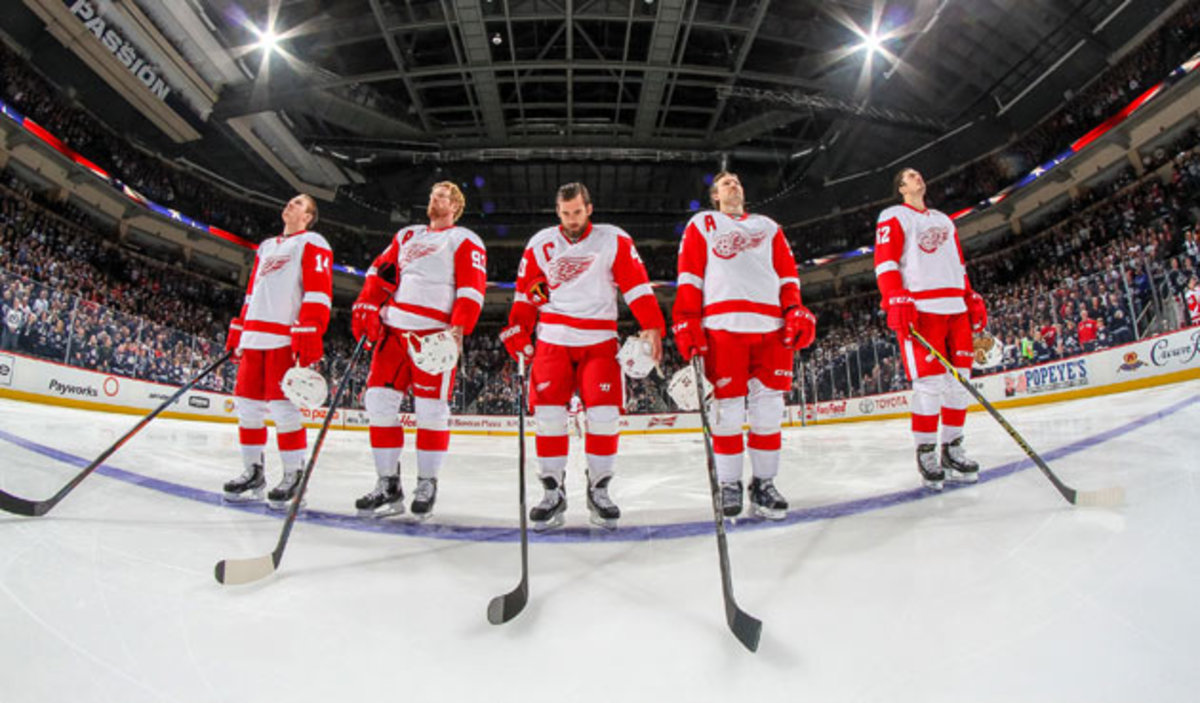
Long before Andersson ever scoured the Continent for players, his life was already centered on landing big ones. Since the age of 11 or 12 he had been trolling the Stockholm archipelago for pike. When he was 15, he and Rockström, a coach in the youth hockey organization in which Andersson played, bought a boat together. Andersson used it to fish for salmon in Norway and grew so adept at angling that he would eventually become a guide. In 1989, while Rockström was scouting players for the Red Wings, Andersson was leading an expedition of well-heeled fly-fishermen to Rio Grande, a city on Tierra del Fuego, in southern Argentina, where they trawled for sea-run brown trout. The analogy between scouting and fishing is vapidly obvious—both require patience and a knowledge of where to look—but inexact because, unlike Swedish hockey players, fish don’t want to be caught.
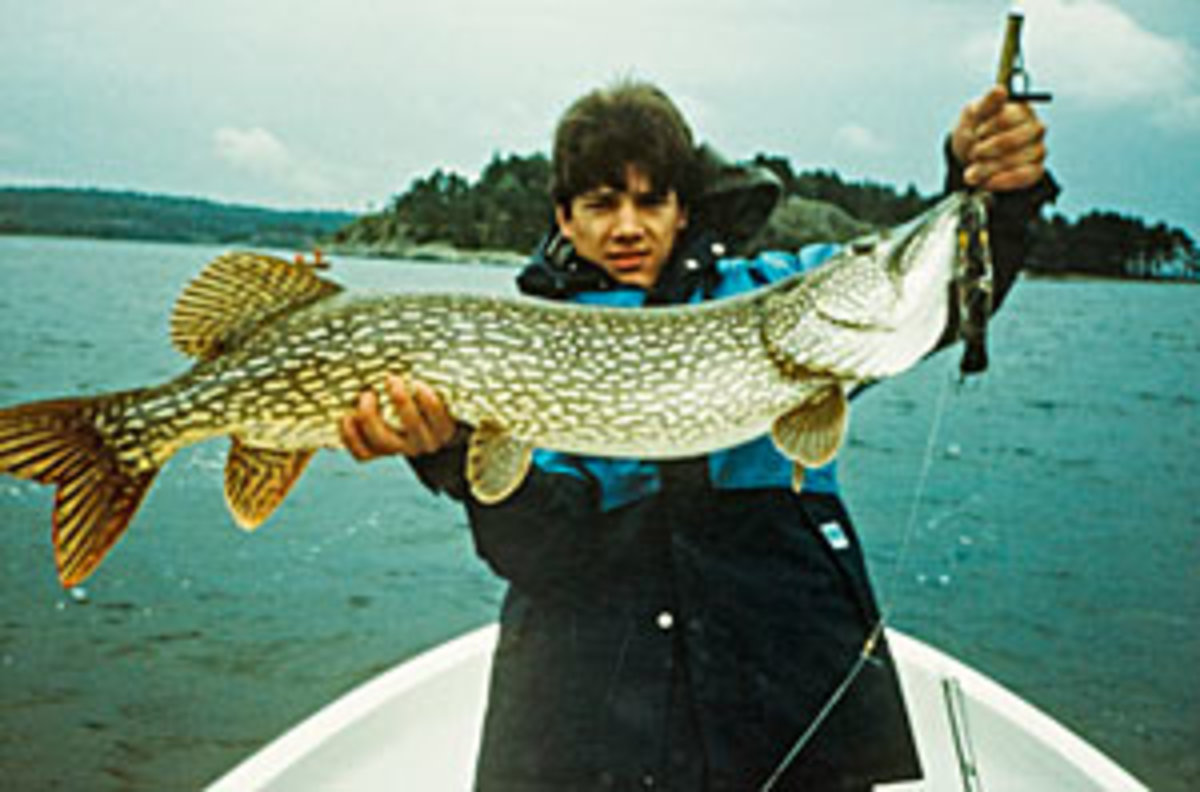
Since 1993, Detroit has drafted 42 Swedes, 18 in the last three rounds. “You have success, you build up a network, and now guys want to go there, something like Minnesota is building with Finns,” a Western Conference scout says. “Not that [Andersson] isn’t a great scout, but he’s with a team with a solid organizational philosophy and great player development. He’s also being fed [information] by coaches and other people because they know Detroit’s a good spot [for Swedish players].” Andersson employs three bird dogs in the country, one each in the north, south and west. Asked if there is anyone in the hockey business in Sweden he can’t get on the phone, he replies, “Not that I need to talk to.”
“I’m not a fisherman,” Holland says, “but I’m assuming if you find a good fishing hole, and you continue to pull fish out of there, you’re gonna keep going back till it’s dry. That’s the same with Håkan and us.”
Andersson’s first big catch was not a magnificent specimen like those 20-pounders his clients landed in Argentina. At 5' 10" and 165 pounds, Holmström was barely a keeper when Andersson first saw him in 1991, at a training camp for 1973-born players. He was a clumsy 18-year-old winger who wasn’t the best skater but was dogged on the puck and eager to get to the net. Two years later Andersson asked a coaching friend in northern Sweden to name the best player in the area and was told it was Holmström, now two inches taller and 25 pounds heavier. Andersson remembered the aggressive teen and went to watch him again. “I mentioned him to our Czech scout, who’d seen him in a tournament there,” Andersson says. “The scout said, ‘I don’t know about that guy. His skating is pretty suspicious.’” On Andersson’s recommendation the Red Wings drafted Holmström in the 10th round in ’94. (There were 11 rounds then.) Holmström won four Stanley Cups, played in 1,026 regular-season games and scored 243 goals. He was known for screening goalies while getting whacked like a piñata and yapping in an incomprehensible linguistic blend that made him sound like a second cousin of the Muppets’ Swedish Chef. “That one,” Andersson says of the Holmström pick, “propelled my career.”
You can't stay angry at P.K. Subban
There is no low-hanging fruit for Detroit, which has not had a top 10 pick since it took Martin Lapointe at No. 10 in 1991. The Red Wings’ perennial success dictates that they have to scout a little harder, nurture talent in the minors a little longer and coach smarter to keep replenishing the NHL roster. At the draft table, Andersson sits four or five spots down from Holland and Detroit’s director of amateur scouting, now Tyler Wright. Generally the Wings’ picks in the first two or three rounds will reflect organizational consensus, but then, as the Europeans on his list go undrafted, Andersson will start inching up the table. “I chuckle because there’s a moment when he gets excited, when he’ll start hovering and whispering to us,” Holland says. “When Håkan talks, we listen. He has a good feel for what it takes to play in the NHL. He’s able to figure out for the most part who can make the transition to North America. And he’s learned where a guy should go in the draft.”
The middle and later rounds are Andersson’s time. In 2008, in the fourth round, Andersson connected on a prototypical Detroit prospect: clever, determined and, yes, small, a player undrafted in his first year of eligibility who had already committed to play collegiately at Maine. “He called me to meet him for coffee on the day of [my junior] game in Malmö,” Nyquist says. “I was a little nervous. He’s a well-known scout.” (To see how a prospect handles the pressure, Andersson sometimes will tip him off that he is coming.) After a three-year apprenticeship in college and 137 games with AHL Grand Rapids, the 5' 11", 183-pound Nyquist emerged to lead the Red Wings with 28 goals in 57 games in 2013–14. This season the 25-year-old left wing has 19 goals, including the overtime winner in Ottawa on Dec. 27, when he circled the zone counterclockwise three times, shook free from two checkers and lasered a shot from 32 feet. The 28-second sequence was positively Datsyukian.
Nyquist has scored 53 NHL goals, as many as Datsyuk at the same age. The difference: Datsyuk has the alltime Håkan scouting story.
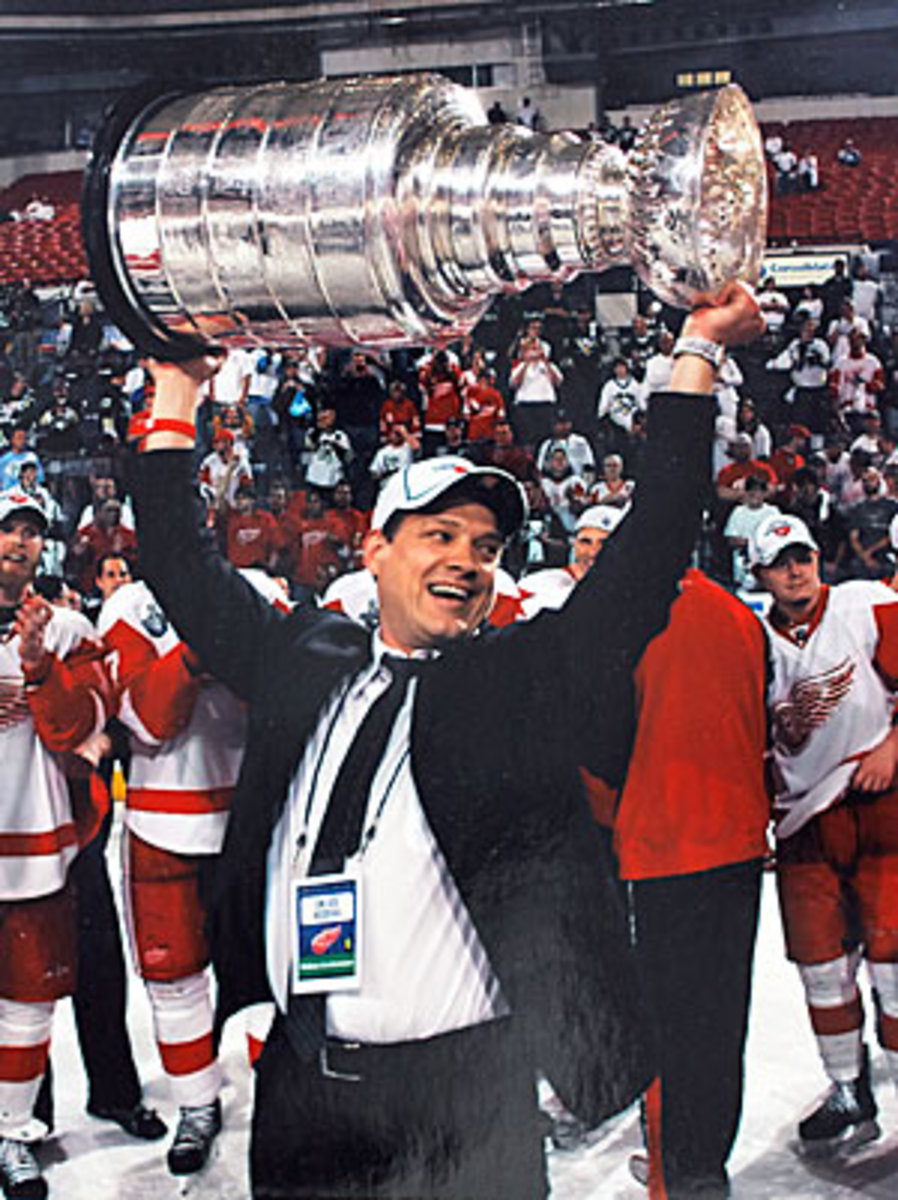
Until 2013, Jim Nill had been Holland’s assistant in Detroit for 15 years, overseeing amateur scouting. “You see all kinds of stuff when you fly in Russia,” says Nill, now the Stars GM. “[Once] Håkan and I saw this guy who had a propane bottle right between his knees. Another time there was a guy with a big hunting knife cutting up a sausage.” Russia is not exactly an upright-and-locked-position kind of place, but the country’s lax approach to air travel made an indirect contribution to Andersson’s most celebrated coup.
In the fall of 1997, Andersson and Rockström were both in Yekaterinburg, a city 900 miles east of Moscow. They primarily were monitoring defenseman Dmitri Kalinin, a future Sabres first-rounder, but that night Andersson was gobsmacked by one of his hockey epiphanies. On a Yekaterinburg power play the center, who Andersson says could not have been more than 5' 9" and 140 pounds, backchecked furiously and made an exquisitely timed, all-out lunge to break up a shorthanded two-on-one, sending the puck skittering to the corner. It was Datsyuk. “I saw skill, great effort and the great read on what was going on,” Andersson says. “He was small, and the NHL’s a big man’s league, but that one play kept coming up in my mind. I knew I had to see him again.”
Andersson did see him again and was en route a third time, only now he had company: a Flames scout was on the same plane. They boarded the scheduled 11 a.m. flight and then sat on the runway as a snowstorm blanketed Moscow. A few hours later Andersson was startled by a roar. Outside his window he could see flames dancing near the wings, blown by a fan through a massive circular device on the tarmac. The contraption looked like Paul Bunyan’s hair dryer. “The snow started to melt,” he says, “but those wings are right near the fuel.” Eventually the deicing was abandoned and the flight was canceled, leaving the two scouts stranded and Datsyuk mostly a mystery to the gentleman from Calgary. Andersson figures he might have gotten scooped if not for the snow. Instead, the Red Wings took the young Russian in the sixth round the following summer.
NHL draft tanking battle ready to rage in wake of trade deadline
Six years later Andersson was almost certain he was the only scout with a fix on defenseman Alexander Edler, then playing for Jämtlands HF, a senior team in what amounted to a glorified beer league in northern Sweden. To avoid an unnecessary six-hour drive from his home, Andersson called the team’s coach to make sure Edler would be in the lineup that night in an end-of-season game. Sure, Andersson was told, come on up. But the coach tipped off an agent in Stockholm, who faxed other Swedish scouts that the Red Wings were interested in Edler. “Biggest mistake of my career,” Andersson says of that phone call. Thomas Gradin, the Canucks’ European scout, saw Edler, and at the 2004 draft Vancouver traded up in the third round to take him, six spots before Detroit’s pick. Edler has played 551 NHL games and has twice reached double digits in goal scoring.
Andersson’s consolation prize was the next player on his European list. The hulking Franzén was undervalued by most scouts because he was perceived to be a shutdown center, the role in which he had been pigeonholed by the Linköping coach. But through his contacts, Andersson learned that the 6' 2", 207-pound Franzén was actually nifty with the puck. The Red Wings took him instead of Edler with the 97th pick, and Franzén has had four seasons of 27 goals or more.
“Not many secrets anymore,” Andersson says. “Datsyuk was small and didn’t make the national team, so that was luck. It’s tougher to find hidden players because junior national team coaches are traveling more, getting the right guys. And once a guy is on a national team, everyone will see him.”
The game between Västeras and the team from Norway, now tied 3–3, slouches into overtime. Lukas Zetterberg has set up two goals but has taken two penalties and rarely has owned the game at even strength. Then, 30 seconds into overtime, Zetterberg bulls the puck into the right face-off circle, rips a shot off the goalie’s pads and pounces on the rebound for the winner, snapping it five hole.
Andersson notes something on the bottom of the roster sheet. Looking up, he says, “Well, he’s quick, but I don’t see pull-away speed. Is the puck glued to his stick? No. Does he have a good shot? Yes. But he missed the net three times. I don’t quite see the tools.” He pauses, smiles. “But he kept himself alive.” Eventually, Andersson might not even mind him.
